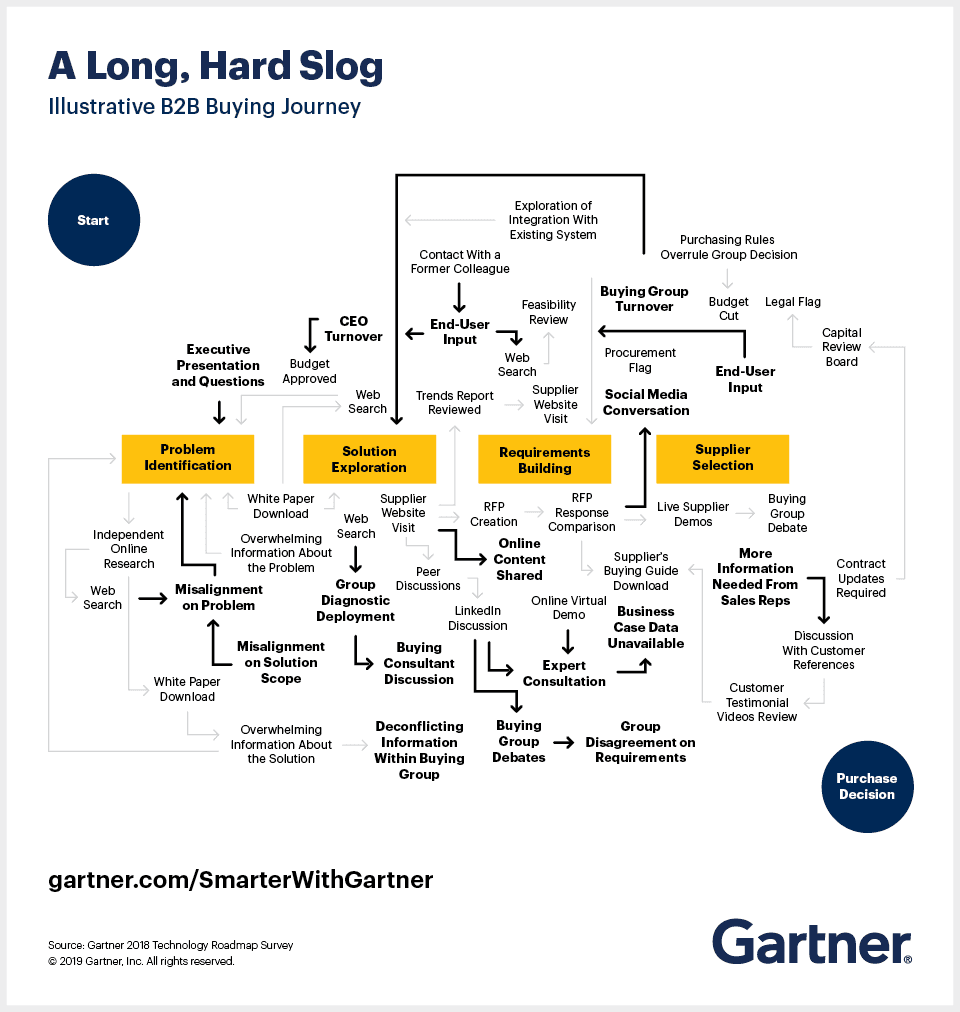How to Close a Sale: Data-Backed Techniques
Jenny Keohane
You’re probably tired of hearing the same cookie-cutter techniques on how to close a sale that have been around since 2010. For this article, we look at our own closed-won and closed-lost activities to determine what the secret sauce is to closing a sale right in 2021.
So, you’ve carefully and thoughtfully walked your prospect through the sales process. You successfully handled objections, follow-ups, meetings, and you’re now at the final stage: the close.
This is a stage that even the most experienced salespeople struggle with. And the reality is that the likelihood of a successful close holds a lot of factors that root back to stage one.
Let’s take a look. Below, we look at original sales closing data, tips for leading up to the close, and sales closing techniques that hold value in 2021.
Here’s what we’ll cover:
- What Is Closing a Sale?
- Using Data to Perfect Your Closing Process
- The Secret to Close a Sale Every Time
- Number of Stakeholders & Activity vs. MRR
- Sales Closing Tips
- Successful Sales Closing Techniques
What Is Closing a Sale?
Closing a sale is the final stage of the sales cycle.
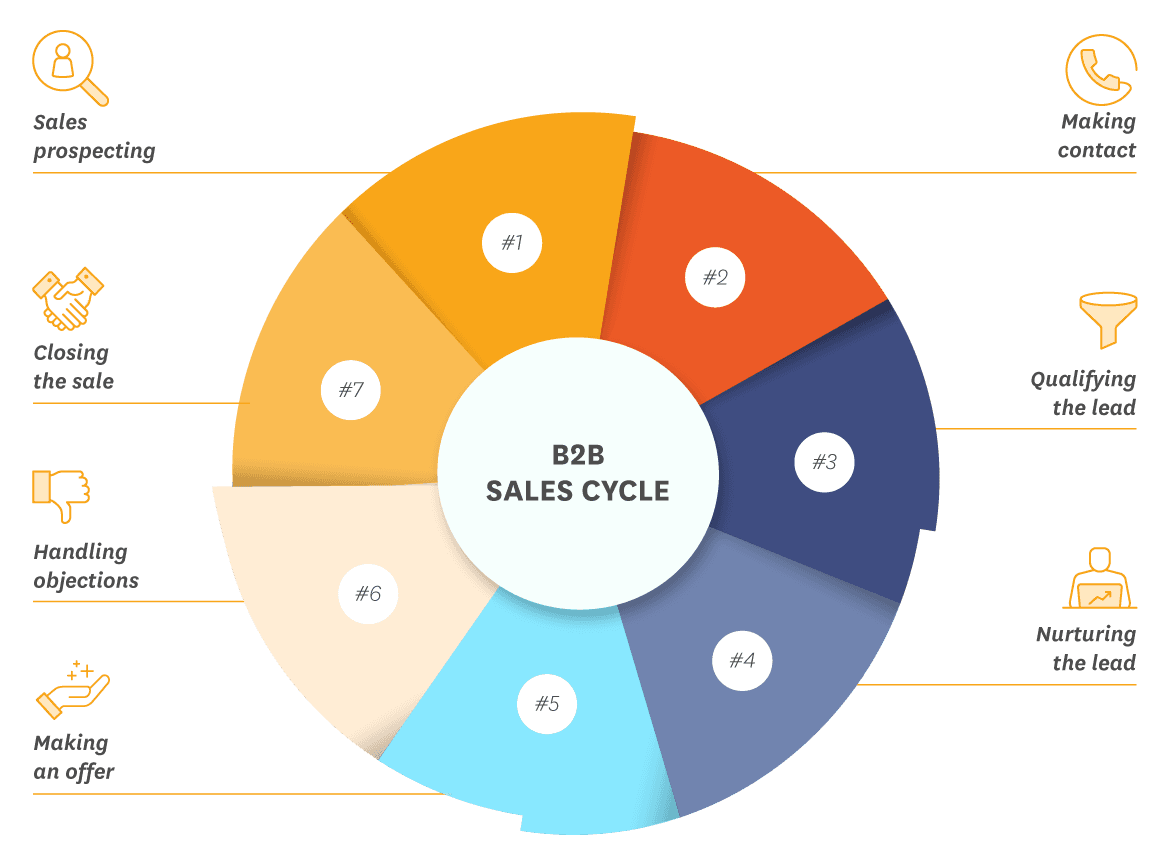 When done right, the sales rep answers all questions and objections, and both agree on a mutually beneficial decision where the solution will be of value to the customer. Then, both parties do their part to finalize the agreement.
When done right, the sales rep answers all questions and objections, and both agree on a mutually beneficial decision where the solution will be of value to the customer. Then, both parties do their part to finalize the agreement.
But it’s not always that easy.
There are many things that can go wrong, but if you take the right steps, you will significantly decrease the likelihood of this happening.
Let’s take a look.
Using Data to Perfect Your Closing Process
One of the best things you can do to perfect your closing process is to track and analyze all activities so that you can dissect what is/isn’t working.
Look at your activities in your CRM and see where your closed-lost opportunities fade off. Here, you can dissect which part of the sales process needs more work.
For example, let’s look at our sales activity here at Yesware for steps that occur later in the sales process and prior to the closed-lost.
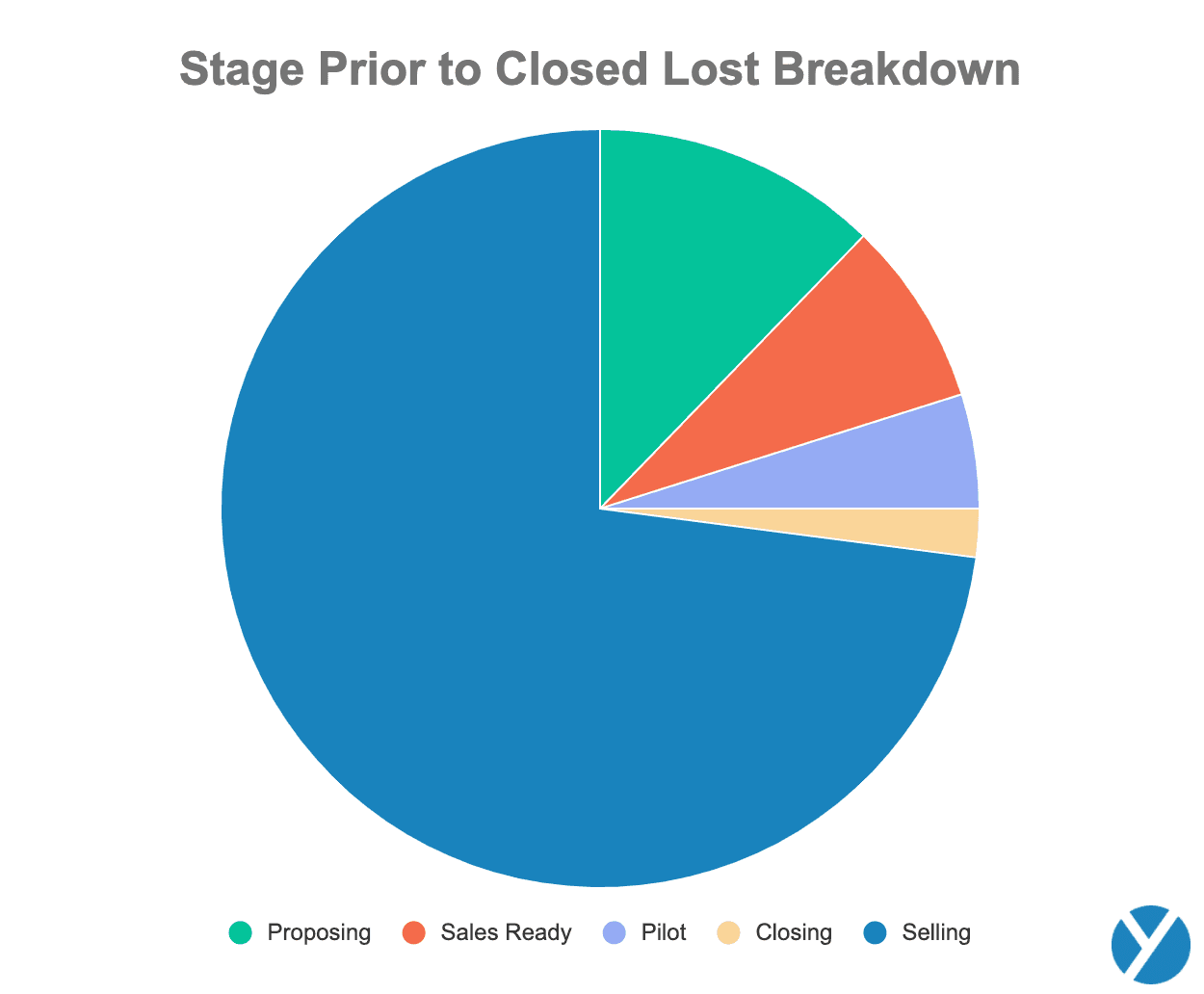
The data clearly shows that we are losing the most sales in the “selling” stage.
What does this mean? This indicates we need to work on qualifying. Although the prospect was qualified as a business, we may need to dive into workflows more in the discovery call.
It’s also important to identify where in the final stages you’re wasting the most time. If you have a high density in the final stage — this is costly to your business. You worked with the prospect for a long period of time and then lost the deal. This indicates that something needs to change.
Dissecting this data is super helpful for improving your closing process.
Now let’s look at some findings on closing techniques that we uncovered in our data.
How to Close a Sale Every Time
To find the secret sauce on how to close a sale — we dove into our database and looked at both closed-won and closed-lost opportunities from 2018-2021.
Here at Yesware, our team uses the Yesware Salesforce Integration to automatically sync all activity to our CRM. So, we took all activity from 2018 to the present day and analyzed the data to find what techniques for closing a sale drive outcomes.
The top ingredient we found is that the average number of stakeholders for closed-lost opportunities is two, and the average number of stakeholders for closed-won opportunities is four.
What does this mean? If you’re not talking to enough people, and better yet, the right people (decision-makers), you’re not likely going to close that deal.
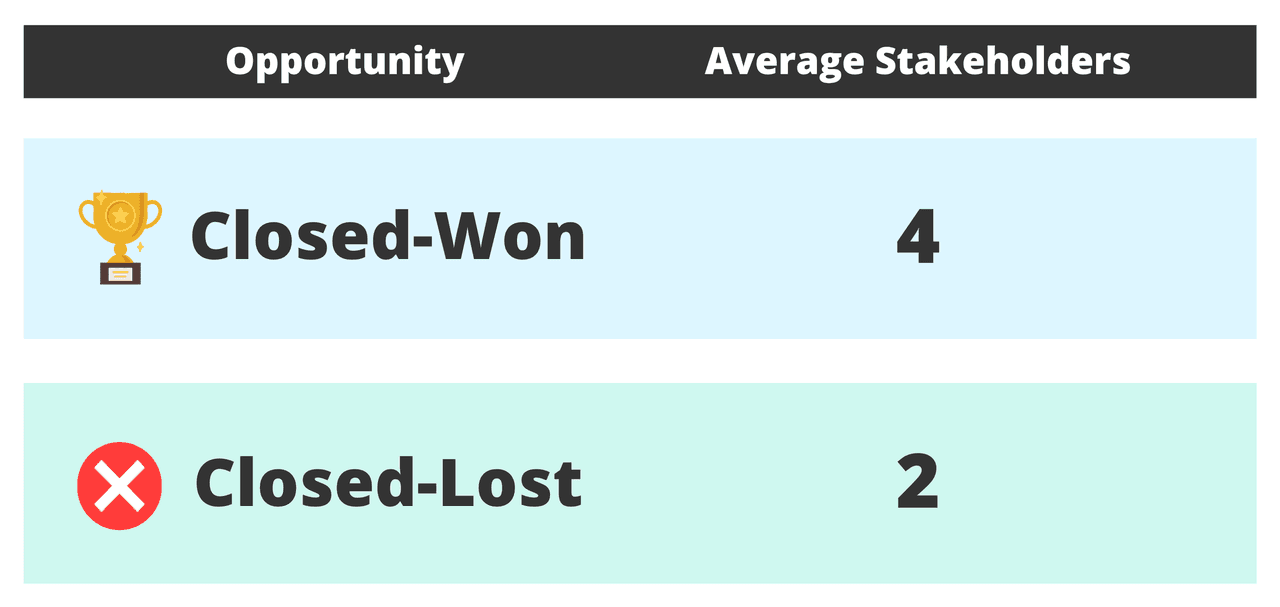
Studies show that the typical complex B2B buying decision now involves an average of 6.8 actively engaged stakeholders.
The key here is to ensure you ask in the discovery phase who will be involved in this decision.
You can ask questions such as:
- “Who is involved in the decision-making process?”
- “Who has been involved in decisions similar to this one in the past?”
- “Walk me through the steps needed to purchase this solution.”
It’s also important to map out the organization and identify who influences who. The more you can figure out the decision-making process, the more you’ll be able to perfect your roadmap. And ultimately, the easier the close will be.
This can be as easy as using LinkedIn to map out the organization.
Remember, reaching out to people who are lower on the company hierarchy might feel more comfortable and safe, but they typically don’t have the authority to make a buying decision.
Number of Stakeholders & Activity vs. MRR
Make sure to always increase the number of stakeholders depending on the size of the deal (MRR).
In our data, looking at closed-won deals, this correlation is very evident.
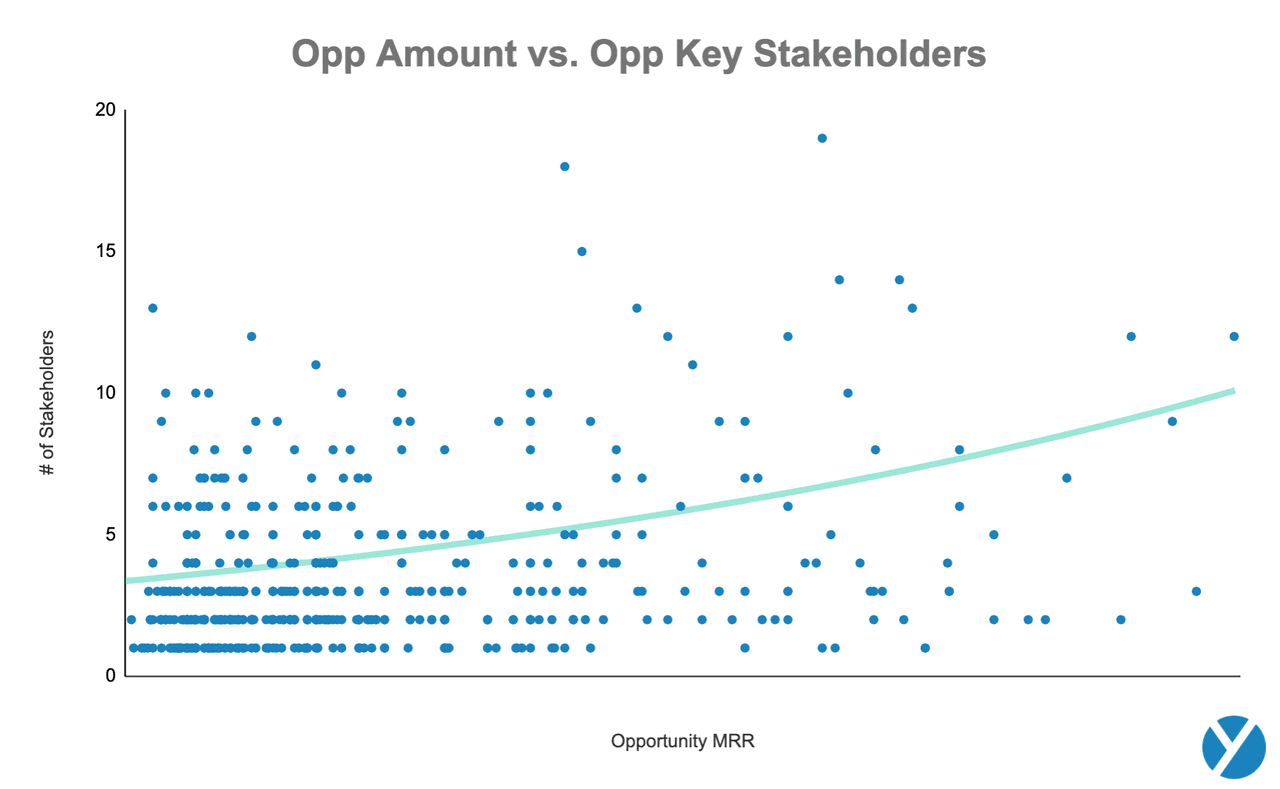 As shown above: as the deal size increases, the number of stakeholders increases.
As shown above: as the deal size increases, the number of stakeholders increases.
This correlation is predicted. If you know it’s a large deal, getting in front of all the right people becomes even more critical. You should prioritize this in the early stages of your sales process, so it doesn’t come back to bite you in the end.
Also, make sure to prioritize your larger deals.
Looking at our data again, more activities also correlate to a larger deal size (MRR). For all closed-won deals, more activity went into larger deals.
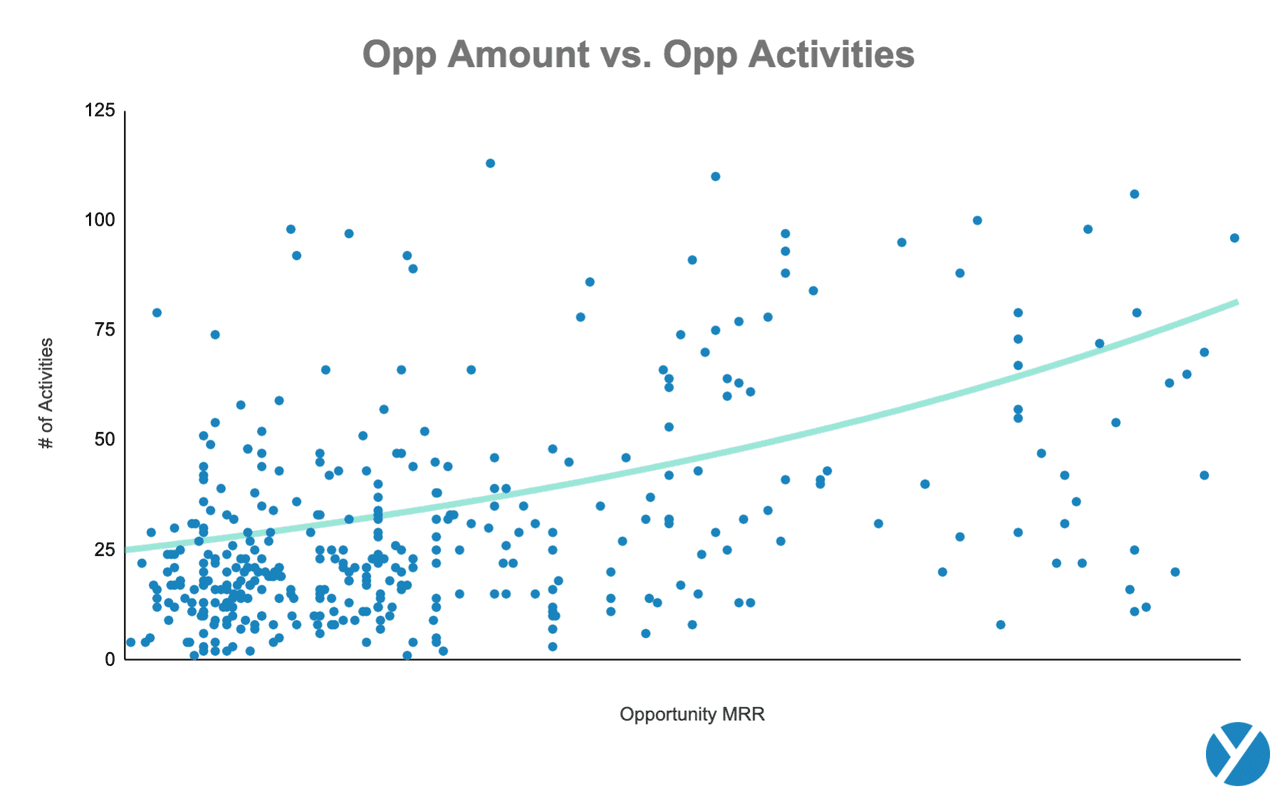 What does this mean? Be reflective of the time you’re using. Because on average, you don’t need as many activities on smaller deals than you do on larger deals.
What does this mean? Be reflective of the time you’re using. Because on average, you don’t need as many activities on smaller deals than you do on larger deals.
As they say, time management is the name of the game. Salespeople need to consciously make these decisions to focus efforts on their larger deals. This is a tough but crucial skill to accomplish in sales.
The reality of the situation is that the B2B sales process has become even more complex over time. And the likelihood of the close really depends on all stages leading up to it. Let’s take a look.
Tip: For more data-driven findings on successfully closing deals in 2021 and 2022, check out our free ebook below.
 Sales Engagement Data Trends for Sales Managers to Know Going Into 2022Looking at hundreds of millions of tracked email activity over the past year, this ebook is filled with our top studies & findings to help your sales team accelerate results in 2022.
Sales Engagement Data Trends for Sales Managers to Know Going Into 2022Looking at hundreds of millions of tracked email activity over the past year, this ebook is filled with our top studies & findings to help your sales team accelerate results in 2022.Sales Closing Tips
The B2B sales process is more complicated than ever before.
As deals get larger and more stakeholders get involved, the time to close a deal is getting longer. 74.6% of B2B sales to new customers take four months to close, with nearly half taking six months or longer.
With the vast information at hand, customers are overwhelmed, reporting high levels of uncertainty and stress.
Trying to rush your prospect toward a sale is a rookie mistake that will undermine trust and cost you potential deals. If you can take the right steps leading up to the close, the final stage will hands-down have better outcomes.
How to do this:
In your early conversations, focus on listening to your prospects so you can understand what they need. Then, over time you can share resources to help inform them on how your product/service can meet their needs and guide them toward the sale.
One of the best ways to run a smooth sales process is to play the role of an expert consultant/knowledgeable authority all the way through to the close. Here’s how:
- Provide relevant and personalized advice
- Help navigate challenging aspects of the purchase process
- Provide recommendations supported by your experience and expertise
- Make it easy and guide them toward the close
This approach translates directly into more closed-won deals.
Gartner found that salespeople who take a proactive, authoritative approach increase purchase ease by 86%. And they’re 62% more likely to close high-quality deals compared with other sales professionals.
Now that you’ve taken the right steps leading up to the close, let’s look at some techniques for how to close a sale.
Successful Sales Closing Techniques
1. Prep & Address All Stakeholders
Before the closing occurs, it’s important to 1.) prepare with the right notes and 2.) open up the call with the purpose/goal and address all stakeholders.
Since you’ve already established relationships with these people, it’s professional to address them each yourself.
Another way to show professionalism is to come prepared. Here are some ideas of notes to bring to the meeting:
- A prepared agenda
- All names and responsibilities of the stakeholders
- Points from previous conversations
- Prepared responses to sales objections
- Possible negotiation discounts
- Next steps
Then when the meeting starts, you’re ready to run through the agenda, set the goal, and address all stakeholders with confidence.
2. Guide the Prospect Through Their Concerns
Gong conducted a study with over one million B2B sales call recordings to find the difference between successful closing calls and unsuccessful closing calls.
Their findings came down to topics raised by the prospect, not the salesperson.
Gong found that successful closing calls involve conversation that indicates the prospect is nervous about making the right decision.
This may be pre-purchase jitters where the prospect is certain about making the decision but wants to ensure it’s the right one. So, give them the clarity they need.
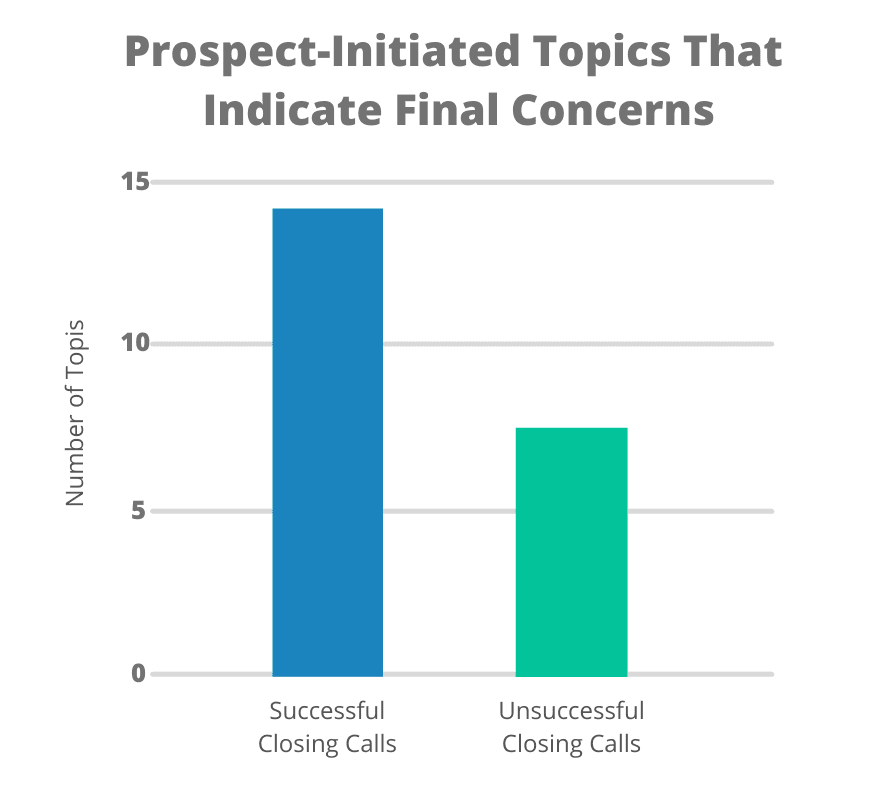
This means that your job as the salesperson is to help guide the prospect to feel comfortable in the purchase. As discussed above, your guidance should be evident all the way through the sales process.
You can do this in the closing stage by leading your prospect through their concerns by addressing them head-on.
3. Be Direct and Confident In the Closing
The tone of your closing call is important. Be direct and straightforward, don’t sugar-coat their objections/concerns. The last thing you want is an unhappy customer once the sale is closed.
It’s also vital to demonstrate confidence. Many experts advise you to go into the call assuming you’re going to close the deal because this immediately boosts your confidence, sets the tone, and gets you excited. This technique is referred to as the “assumptive close.”
Think about it; you don’t go into a sports game thinking you’re going to lose. So, try to adopt this similar mindset. Go into the call believing you’ll close the sale.
And if the prospect says no, get more information from them as to why.
4. Promote Urgency, When Needed
This age-old closing technique is one that holds true to the present day. But this is only needed when you can sense the prospect is on the fence.
Using urgency to your advantage can help influence action and incentivize them to commit sooner.
It’s a psychological fact that things seem more valuable when they are considered to be scarce. This can be done with time-sensitive offers.
For example, when you’re looking at hotels and see that there is only one hotel room left, you’re more eager to hand over your money as quickly as possible.
There are various tactics to promote urgency. You can do this by offering a limited time discount, additional seats, an extra benefit, or anything time-sensitive that’ll help speed up their decision.
Then, they have something to lose if they say no (well, other than losing the benefits of your product/solution, of course).
5. Make the Close Easy
One of the best things you can do as a salesperson is to make the close easy for your prospects.
That’s why it’s important to provide free trials because the best way to show your prospect the value and benefits of your product/service is to allow them to try it for themselves.
Make the closing conversation easy by answering all of their questions to ease any doubt. But don’t stop there. Make the contract and purchasing process easy as well.
If they’re unsure about certain aspects of the onboarding process, give them access to trainers and the tools they need to feel comfortable moving forward. Talk them through your customer support, explain the onboarding process, etc.
Then, to ensure completion, establish a timeline that the process should be completed. And be crystal clear that you’re on the same page.
Conclusion
In 2021, techniques on how to close a sale vary.
The best way to perfect your closing techniques is to put these practices into play. And track all activities throughout your sales process.
There are various “sales closing techniques” out there, but it’s important to go into the conversation with an open mind and feel out the prospect before jumping into a technique that may not be fitting for that specific situation.
And if you track all activities, you and your team can dissect which stages need work and which closing techniques are/aren’t working for you and your prospects.
Get sales tips and strategies delivered straight to your inbox.
Yesware will help you generate more sales right from your inbox. Try our Outlook add-on or Gmail Chrome extension for free, forever!
Related Articles
Casey O'Connor
Casey O'Connor
Anya Vitko
Sales, deal management, and communication tips for your inbox

